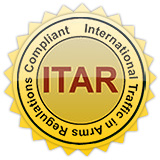We marvel at the finished product but almost never stop to wonder about the technology behind it. In almost every powered device lies a printed circuit board (PCB), the brains of the operation. OrCAD and Allegro are two of the top software programs used to design PCBs. At CA Design we offer both OrCAD layout services and Allegro layout services to design the important PCBs. Without PCBs, we would never enjoy snapping photos, watching television, or listening to the radio.
A PCB in the very basic sense ensures that a device functions as designed by ensuring that components are connected and electricity flows between them. The board is made up of either a resin or plastic and solder (conductive metal parts that deliver energy). It can be made up of many layers, with more complex devices demanding more layers.
There is a process to be followed when creating a PCB. First off, you will need a designer who not only knows how to properly analyze requirements but is also knowledgeable in different design strategies in order to produce a product that will function as designed.
Once the requirements have been set, the design process commences.
The PCB Design Process
Schematic Design
Every PCB design process starts with a schematic. Its importance in the development of a circuit cannot be stressed enough. Yes, the design may be rough but it is a general representation of the elements that will be used in the circuit.
The creation of a schematic was done by hand in the past but today, that is easily taken care of with the use of electronic design automation (EDA) software like our Allegro layout services. Schematic capture tools are used to prepare electronic circuits and once that’s done, the design can be passed on for further design and verification.
These days, the process is made easier thanks to many applications now linking all the tools for a more seamless PCB design flow.
A schematic also contains interconnectivity information, which is a guide on how all the pins or nodes are connected.
Component Layout (Placement)
Once a schematic is in place, the components need to be laid out. A schematic doesn’t yet look like the actual circuit that will be created. It’s essentially a rough sketch of the components involved.
This step is where all the components are laid out to see how they all fit on the board. During this step, the number of layers to be used will be determined.
Routing
After each component is assigned a location on the board, wires need to be added to make sure every element is connected. This is done by the software using the interconnectivity information included in the schematic.
Routing can be a power hungry process, depending on how many components are involved. Essentially, it will take some time to complete depending on the circuit’s complexity.
Printing, Fabrication, and Assembly
Once the design is in place, the information is put into a Gerber file, the standard for PCB files. The file will serve as the instructions needed during the production phase.
Rapid prototyping of a PCB is possible by using a 3D printer. This is a quick way to create designs and test them straight away.
Testing
Every circuit needs to be tested to ensure every element is functioning. This board forms the backbone of every product so it’s important that every aspect is tested to ensure there are no failures.
PCBs are important components of a powered device and they need to be designed with precision and accuracy. If you’re looking for Allegro layout services that know how to interpret requirements in order to bring to market a functional product, contact CA Design today!




